

Eden Water Technologies - We’re Revolutionizing Water Treatment & Fertigation for Cannabis
We’re Revolutionizing Water Treatment & Fertigation for Cannabis

We’re Revolutionizing Water Treatment & Fertigation for Cannabis


We are all aware of the importance of “Reduce, Reuse, Recycle” in everyday life. However, we often overlook how cannabis growers can incorporate this standard while growing cannabis sustainably and responsibly for our environment. Not only does it provide economic benefits with cost savings, but it also ensures that our carbon footprint is kept at a minimum. We must prioritize growing cannabis sustainably and responsibly through protecting the environment in all of our operations. Doing so is essential for a bright future.
The environmental effects of cannabis cultivation is a matter that requires more attention. With the legalization of cannabis all over the United States, the use of cannabis has become increasingly common. This topic needs more investigation to understand its global impact. Here, we’re examining if the cannabis business can really be sustained and what challenges it faces.

The Benefits of Sustainable Cannabis Cultivation & Why You Should Do it
The Impact of Electricity Consumption on Cannabis Sustainability
Water Conservation Tips & Techniques to Help you Grow Sustainable Cannabis
Taking Steps to Reduce Air Quality Issues and Increase Sustainability
Choosing the Right Growing Medium for Sustainable Cannabis Growth
How Sustainable Practices can Help Reduce Waste in the Cannabis Industry
Does the Cannabis Industry Have a Sustainable Future?
The cultivation of cannabis is an important industry in many countries, and it can have a significant impact on the environment. Sustainable cannabis farming can help reduce water and energy consumption, while also providing environmental benefits such as reducing pollution and promoting biodiversity.
In addition to these environmental benefits, organic cannabis cultivations can also help farmers save money by reducing their production costs. This is especially true for organic farmers who are able to produce high-quality products without relying on expensive fertilizers or pesticides.
For those looking to get involved in the cannabis industry, sustainable farming practices are essential for ensuring the long-term success of their operations. Growing cannabis responsibly, farmers can reduce their environmental footprint while also benefiting from increased profits and improved product quality.
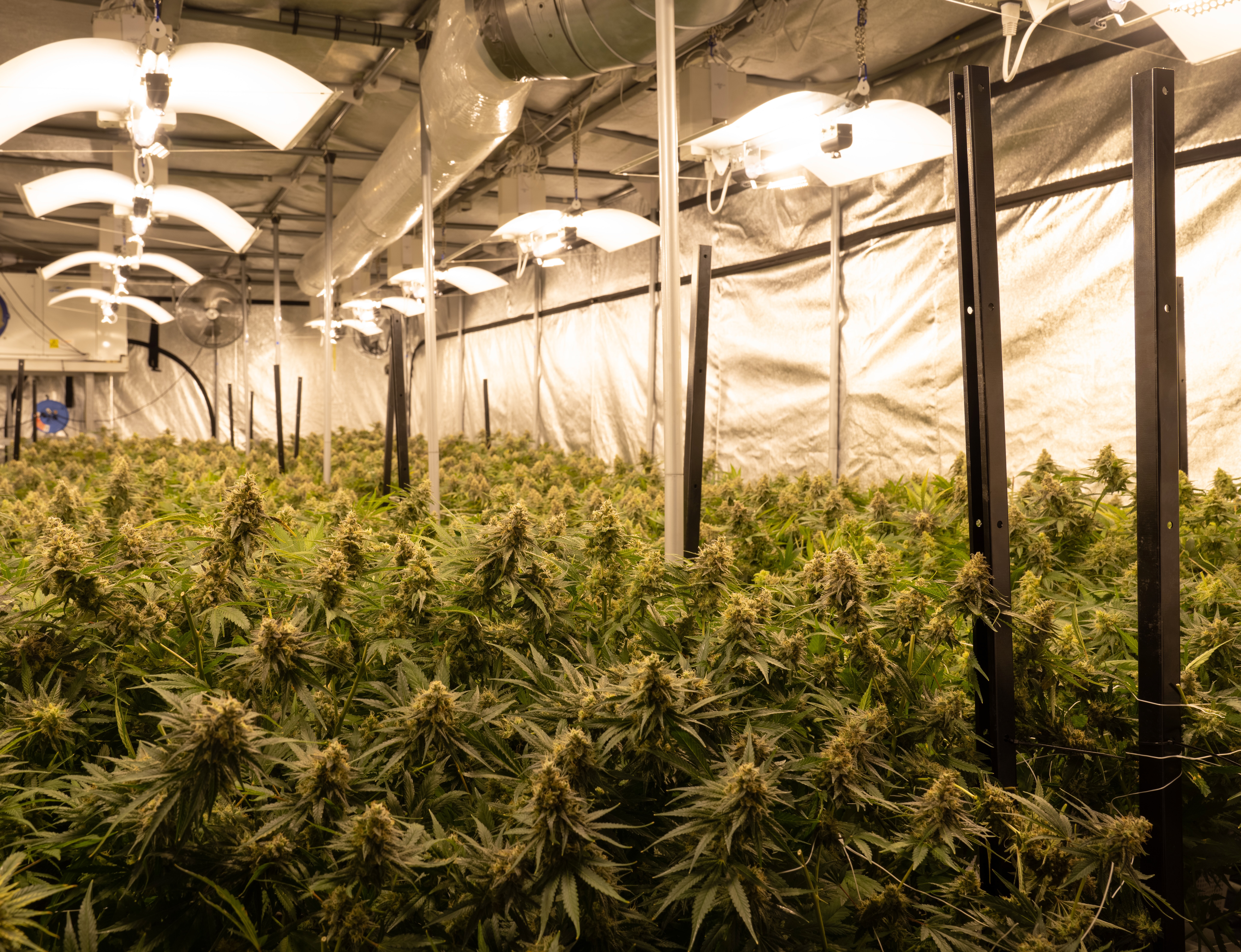
Electricity consumption is often identified as one of the biggest problems for the cannabis industry. From an environmental standpoint, one way to remedy this issue is by creating more sustainable indoor cultivation methods that use less power. Currently, indoor marijuana growers use high-powered lights and air conditioning units to keep their plants happy and healthy; however, there are some producers who are experimenting with new cultivation methods that could cut down on electricity usage while still maintaining product quality.
Alternative sources of energy, such as wind and solar power, are being explored for the benefit of the environment. Heat from the sun can also be used to warm water which then circulates around a building to keep it at a comfortable temperature. It is important to be mindful of these practices and use them responsibly. To conserve energy and reduce costs, make sure to switch off unnecessary lights in non-production hours. It is also a good idea to replace regular lighting with more power efficient LED ones.
Moving cannabis growing completely outdoors would decrease energy use, but it’s not always feasible. Cannabis is primarily grown outdoors in the western US, which is facing drought conditions and dwindling water supplies. John Kagia, Chief Knowledge Officer at New Frontier Data, warns that the cannabis industry is incredibly energy-intensive and remains so. New Frontier Data provides market research services and focuses on the global cannabis sector. Although indoor growing is the norm for cannabis in the US (outside of California), Kagia has noticed a trend towards transitioning to greenhouses. This could be a great option for growers as it offers more natural and cost-effective alternatives than indoor cultivation techniques.
Although greenhouse farming has its advantages, it is important to be aware of the possible risks and challenges associated with it. For instance, growers rely on the sun and may need to supplement with additional artificial lighting when necessary. Additionally, since this type of farming is more closely connected to nature and the weather, these farms may need to close for periods of time during extreme weather.

It is important to keep in mind that growing cannabis can use a lot of water. When it comes to conserving water, there are several strategies you can use. Having a rain barrel or collecting runoff from your roof gutters is one way to reduce water consumption. The use of organic compost to improve soil is another way to conserve water. But compost can only be used for a limited time and you will need to start over with new ingredients.
Drip irrigation is a water-conserving technique that can be used in cannabis cultivation to reduce water usage and energy consumption. Drip irrigation helps reduce the chances of overwatering and other related issues. It is an effective way to reduce the environmental impact of cannabis farming, as it allows for more efficient use of natural resources. Most irrigation lines can be reused many times when properly taken care of.
By applying the correct amount of water and nutrients at the right time, you can save a lot of water while conserving energy with drip irrigation and The Paragon. Get familiar with our modern fertigation system today to ensure your plants get exactly what they need, down to the milliliter.
Using all of these strategies will help make sure that you don’t waste resources, while still providing your plants with the hydration they need. You can save up to 90% of water consumption on your property. Additionally, these practices can also help improve soil health, increase yields, and provide other environmental benefits.
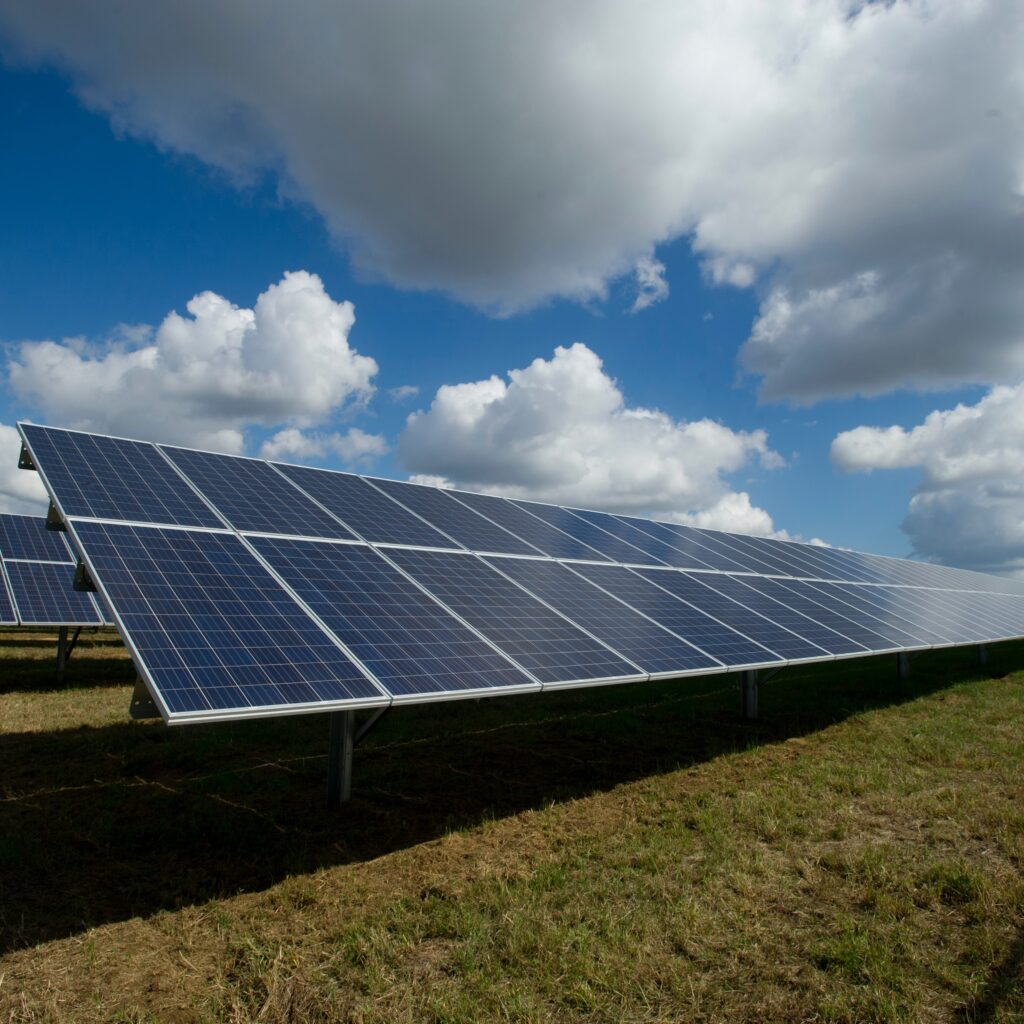
The cannabis industry is one of the most energy-intensive industries in the world. As such, it has a significant impact on air quality. To reduce this impact, many cannabis companies are turning to renewable energy sources such as solar and wind power to power their operations. By using renewable energy sources, cannabis companies can reduce their carbon footprint and help improve air quality in their local communities.
Solar and wind power reduce the use of fossil fuels by decreasing our carbon footprint. Carbon dioxide is a greenhouse gas that traps heat in the Earth’s atmosphere, leading to global climate change. Fossil fuels are our primary source of energy, so reducing their use can lead to lower amounts of carbon dioxide in the atmosphere, which can help improve air quality. In addition, solar and wind power reduce local air pollution by using cleaner sources for electricity production. For example, using wind power for electricity generation results in less emissions from burning fossil fuels , whereas solar power uses no fossil fuels at all. Solar and wind power require no fuel in their production and can be sustained by the Earth’s natural resources. They produce energy without any harmful emissions into the atmosphere or water, making them sustainable alternatives to fossil fuels.
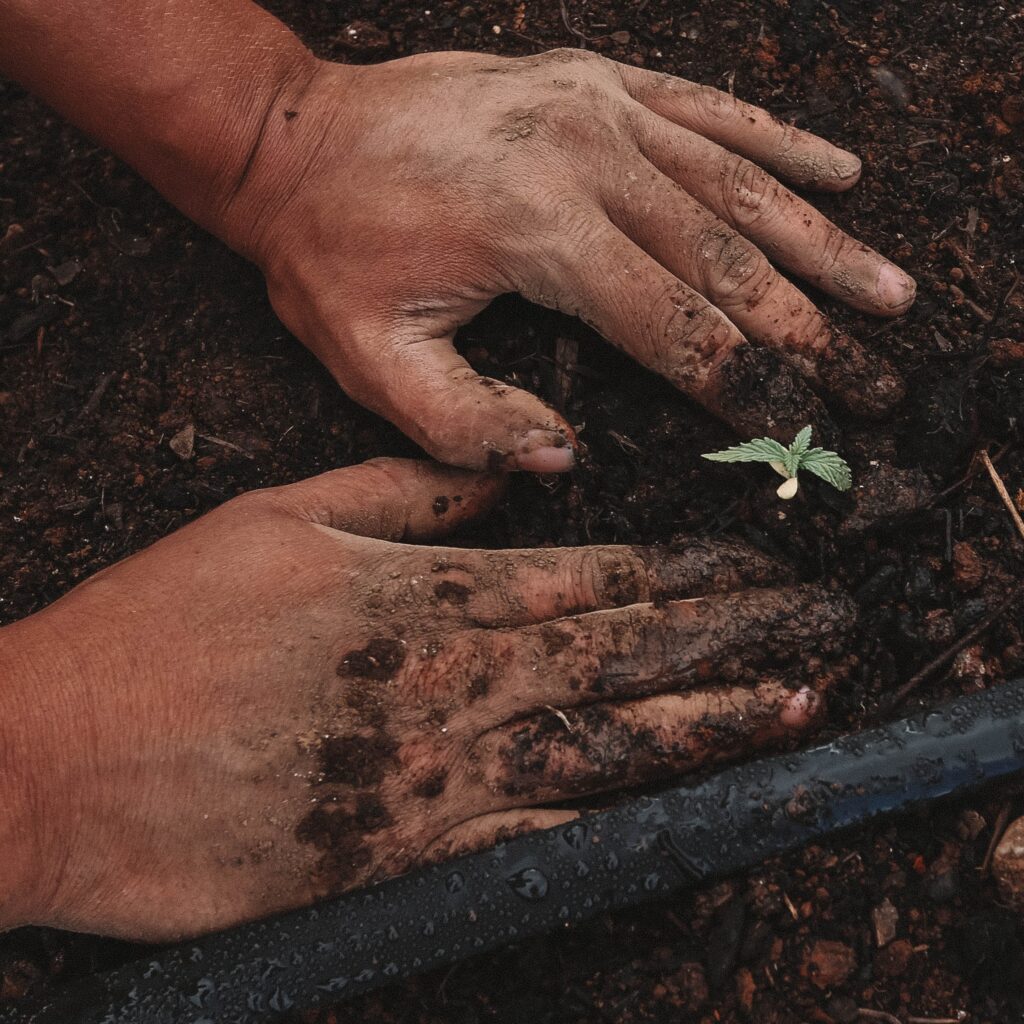
Chemical fertilizers are commonly used to grow commercial cannabis as they provide speedy delivery of nutrients. While chemical fertilizers can have some short-term benefits, they have the potential to destroy soil sustainability in the long run, as they can kill off beneficial microorganisms. Therefore, it is important to exercise caution and use them judiciously.
While organic growing mediums are generally recommended for cultivating cannabis, Coco Coir stands out for its superior nutrient and pH levels. Consistent maintenance of these two features is essential for producing top-quality marijuana.
Organic fertilizers are essential for an effective hydroponic system as they contain various minerals, such as calcium, magnesium, phosphorus, potassium, and nitrogen, which are all necessary nutrients for healthy plant growth. Hydroponic farming is an attractive option for marijuana production due to its ability to efficiently provide nutrients without the need for tilling soil or risking the release of harmful pollutants. It is important to take precautions and monitor the process regularly, however, in order to keep it as sustainable as possible.
Hydroponic systems’ ability to provide tailored nutrient uptake and extraction makes them attractive to cannabis growers who are aiming to maximize quality and reduce waste. Automated irrigation systems can be beneficial in hydroponic cannabis production, providing labor efficiency and precise nutrient control with reduced wastage. However, care should be taken to ensure proper maintenance and regular system checks are conducted.

It is true that cannabis production brings many advantages for the environment and human health, but it’s important to be aware of the potential risks. Indoor growing operations can expose people to pesticides, which is why it is important to be cautious when handling this type of product.
Cannabis crops are often sprayed with harsh chemicals and pesticides to protect against pests and diseases. This can be dangerous, as it causes contamination of both the environment and the product itself. Therefore, it is important to exercise caution when using these chemicals and pesticides. Growing cannabis sustainably and responsibly means taking all the necessary steps to ensure their crops remain healthy and that there is no environmental damage caused by their operations.
Implementing sustainable practices can help reduce the amount of pesticides used in agricultural production. Though synthetic chemicals are effective in cultivating cannabis, cultivators can also use alternatives such as ladybugs, natural pesticides, and organic pesticides to reduce their dependency while producing good quality cannabis.
Be aware that cannabis plants have a natural defense mechanism against pests. As these plants release odors and toxic compounds, the presence of these elements make it difficult for pests to stay in their vicinity. This can drive them away from the plant, ensuring that a minimum amount of pesticides is needed to preserve crop health and prevent pest population outbreaks in the soil.
It is important to be aware that pesticides may need to be applied when dealing with soil-borne pests such as aphids. Unregulated use of these products could have serious consequences, as cannabis crops can seep into the earth, potentially contaminating soil, water and other vegetation. It is therefore essential to use these substances with caution.

Growing cannabis sustainably and responsibly can be tough with ever-increasing levels of waste in terms of packaging and plant debris. It’s important to put rules in place to help recycle and compost this material, or else the problem will only get bigger. Consequently, some states are taking steps to alleviate this environmental burden by loosening restrictions on recycling and composting regulations.
Cannabis growers who wish to discard their plants must take caution when doing so. To be compliant with the law, cannabis waste must be properly mixed with non-cannabis waste in a 1:1 ratio before disposing, making it unrecognizable. Governments are increasingly concerned with the potential of cannabis waste being used in illegal activities. As a result, cannabis waste has to be carefully disposed of and cannot be placed in compost bins or regular trash bins. To avoid any misuse, it is usually sent straight to landfills along with post-consumer non-consumable waste.
It is legally mandated for companies dealing in cannabis products to adhere to strict packaging regulations. These regulations include child-proofing, clear labeling and the utilization of durable materials. Failure to comply with any of these guidelines could potentially lead to legal repercussions.
Plastic packaging is a major issue due to its accumulation on the planet and irreversible consequences for the environment and human health. Unfortunately, single-use plastic packaging is not often recycled or reused, with cannabis packaging most likely ending up in landfills. It is highly suggested to utilize plastic packaging only when it is necessary. Petroleum-based plastics can be substituted with more sustainable materials, like the durable and recyclable glass bottles which secure the purity of the product without causing damage to nature.
Currently, the recycling of cannabis packaging waste is prohibited in Michigan and other states. However, Michigan officials are reviewing the possibility of allowing dispensaries to collect such waste.
Hempcrete is an impressive and innovative material made from the fibers of cannabis and hemp, Although cannabis plants are typically thrown away after use, harvested hemp can actually be utilized to construct extremely durable building materials. This innovative eco-friendly solution may revolutionize the way we approach construction in the future.Hempcrete can actually be counted as “carbon negative” since the amount of carbon it removes from the atmosphere is more than what it produces during its production process.
Vape cartridges have attained a considerable share in the legal marijuana market, with 25% of the overall sales coming from this segment. While they offer great convenience, the rapid growth of vaping could lead to an increase in the amount of waste generated by the cannabis industry ten years down the line. Therefore, caution should be taken when using vape products now to ensure a sustainable future.

Growing cannabis sustainably and responsibly can be accomplished. It is critical to understand that we must act quickly in order to mitigate the environmental damage currently being done. We must set an example and invest in resource-efficient cannabis cultivation facilities, as well as reduce the environmental impact of cannabis production. Otherwise, other countries may follow these unsustainable practices when they legalize cannabis. We must act soon to build a portfolio of best practices that will allow us to be productive, efficient, and conserve resources while avoiding unnecessary waste. It’s important that everyone involved in the cannabis industry works together and collaborates to ensure its sustainability and secure a successful future for all.

Introduction:In the dynamic world of agriculture, innovation is the driving force behind progress. Meet the Paragon fertigation machine – a groundbreaking technology that emerged from

Introduction: In the ever-evolving world of ag-tech, Eden Water Tech is making waves with its innovative Paragon Fertigation System. Let’s dive into the strides taken
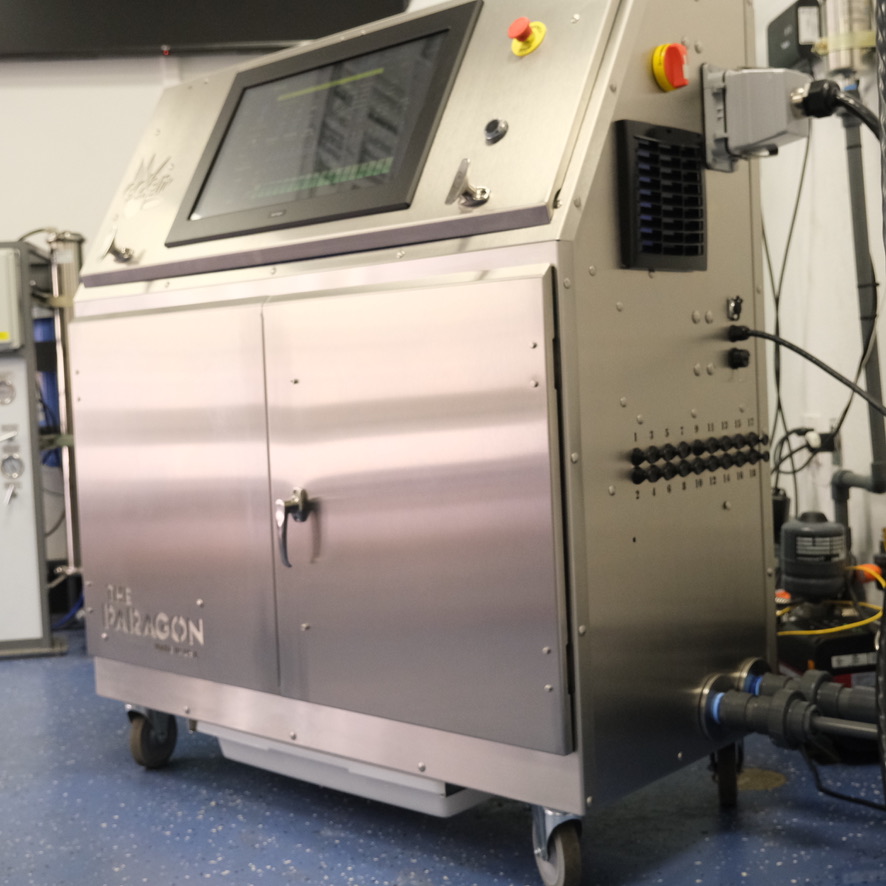
Introduction:In the ever-evolving world of agriculture, growers are constantly seeking innovative solutions to increase efficiency, reduce costs, and ultimately enhance their profitability. One such groundbreaking
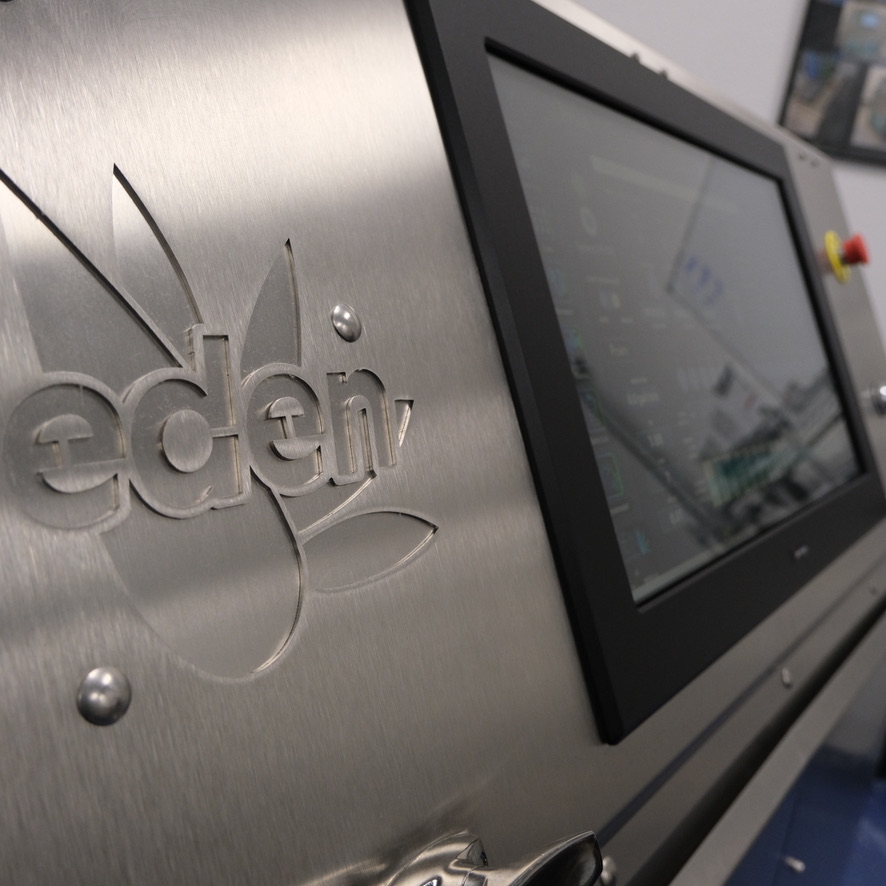
In the ever-evolving world of agriculture, innovation is the key to sustainable and efficient crop production. One remarkable player in this arena is Eden Water

Fill out the form to be enrolled in our email list, where you’ll receive exclusive access to ebooks, tips & tricks, and the latest news in Cannabis Fertigation.

We’re Revolutionizing Water Treatment & Fertigation for Cannabis
Designed by ThrivePOP ❤️